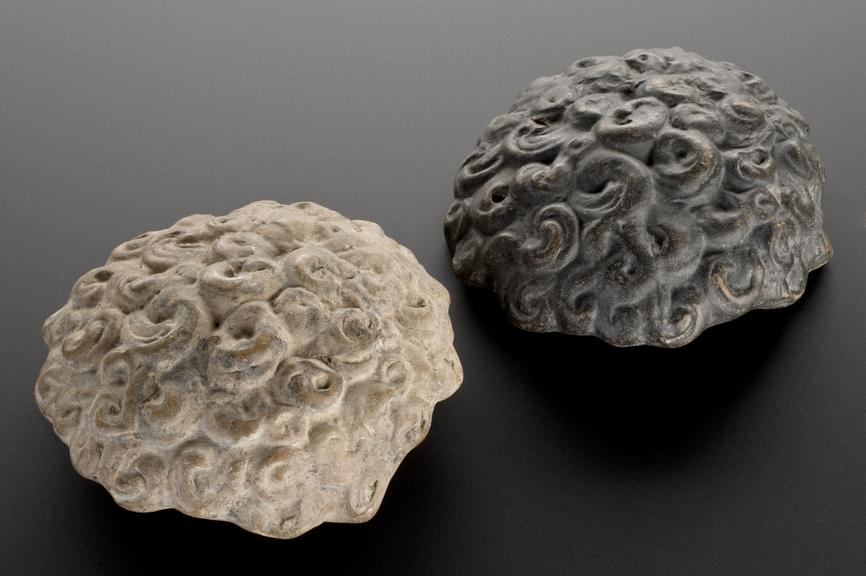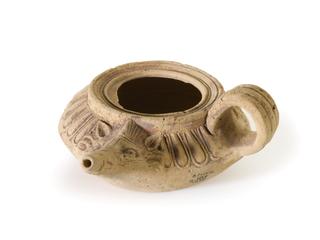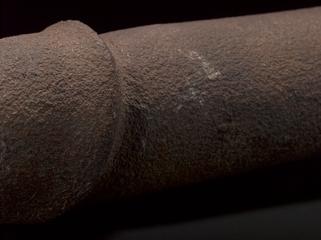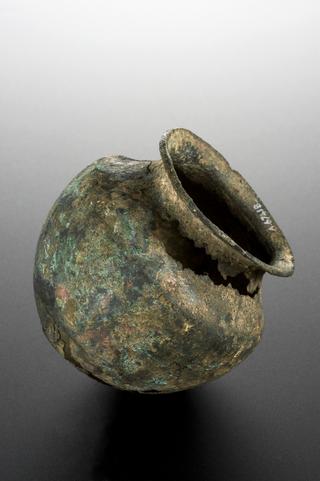
Terracotta votive scalp with black painted hair, Roman, 100 BCE-300 CE
- Made:
- 100 BCE-300 CE in Roman Empire

Votive scalp with hair, terracotta, painted black, possibly Roman, 100BC-300AD
Made from terracotta, this votive offering is in the shape of a scalp with hair.
Anatomical votives such as this were left at healing sanctuaries and other religious sites as offerings to gods such as Asklepios, the Greco-Roman god of medicine. It was intended either to indicate the part of the body that needed help or as thanks for a cure. This person may have had chronic headaches or hair loss.
Made from bronze or terracotta, as in this case, a large range of different votive body parts were made and offered up in their thousands. Although it originated in earlier cultures, this practice became very popular in Roman Italy – particularly between the 400s and 100s BCE.
The scalp was originally part of the Gorga collection owned by Evangelista Gennaro Gorga (1865-1957), a famous Italian opera tenor. The Gorga collection of mostly Roman instruments, votive offerings and pharmacy ware was bought in two parts by Henry Wellcome in 1924 and 1936. The votive is shown here with another similar example (A114891).
Details
- Category:
- Classical & Medieval Medicine
- Collection:
- Sir Henry Wellcome's Museum Collection
- Object Number:
- A634932
- Materials:
- terracotta
- type:
- votive offering
- credit:
- Gorga, Evangelista




